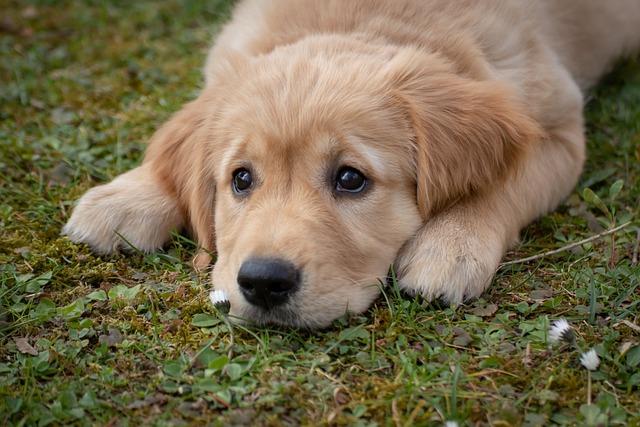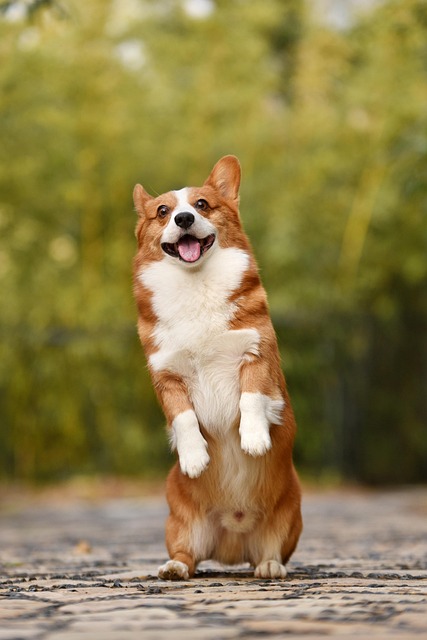If you’ve recently adopted a furry friend into your home, congratulations! Having a new puppy is an exciting and rewarding experience. However, one challenge that many new puppy owners face is the process of housebreaking their little bundle of joy. In this comprehensive and detailed article, we’ll explore various strategies to help you successfully housebreak your puppy. From establishing a routine to positive reinforcement techniques, we’ll cover everything you need to know. Additionally, we’ll discuss common mistakes to avoid along the way. So, grab a cup of coffee, sit back, and let’s embark on this journey of housebreaking your puppy together!
Table of Contents
Introduction
Understanding Housebreaking
Choosing the Right Method
Setting Up a Routine
Supervising Your Puppy
Positive Reinforcement
Common Housebreaking Mistakes
Dealing with Accidents
Patience and Consistency
Conclusion
Introduction
Welcoming a New Puppy into Your Home
Bringing a new puppy into your home is an exciting and joyful experience. Their playful antics and unconditional love can bring so much happiness to your life. However, along with the joys of puppyhood, there are some challenges that come with it. One of the most important tasks you’ll need to tackle is housebreaking your new furry friend. This article will guide you through the process of housebreaking, providing you with strategies and common mistakes to avoid.
The importance of Proper Housebreaking
Proper housebreaking is crucial for both you and your puppy. It helps establish boundaries, prevents accidents, and promotes a clean and harmonious living environment. By teaching your puppy where and when to eliminate, you are setting them up for a lifetime of good habits. Housebreaking not only ensures the well-being and comfort of your puppy but also strengthens your bond with them.
Benefits of a Well-Trained Puppy
Housebreaking is an essential aspect of puppy training that goes beyond mere cleanliness. A well-trained puppy understands the rules of the house, making them more confident and better-behaved. It also makes it easier for you to include your furry friend in family activities without worrying about accidents or disruptions. A well-trained puppy builds a foundation for future training and sets the stage for a happy and balanced life together.
Understanding Housebreaking
What is Housebreaking?
Housebreaking, also known as potty training or toilet training, refers to the process of training a puppy to eliminate in the appropriate place and at the appropriate time. It teaches them to understand the difference between indoor and outdoor spaces when it comes to bathroom needs.
The Anatomy of Housebreaking
Housebreaking consists of a combination of understanding your puppy’s behavior and communication, setting a routine, supervision, and positive reinforcement. By focusing on these key elements, you’ll be able to guide your puppy towards successful housebreaking.
Puppy Behavior and Communication
Understanding your puppy’s behavior and cues is crucial in successfully housebreaking them. Puppies usually exhibit signs of needing to eliminate such as sniffing the ground, circling, or whining. It’s important to pay attention to these signals and act promptly to avoid accidents. Additionally, puppies may also communicate through body language or vocalizations, so learning to interpret their signals will help you respond effectively.
Identifying the Signs of Needing to Eliminate
To avoid accidents, you’ll need to be vigilant in spotting the signs that indicate your puppy needs to eliminate. Some common signs include restlessness, pacing, barking, or scratching at the door. When you notice these behaviors, it’s crucial to guide them to the designated elimination area or take them outside promptly.
Choosing the Right Method
Crate Training
Crate training involves confining your puppy to a crate or a small enclosed space when they are not under direct supervision. It utilizes the natural instincts of dogs to seek a clean and comfortable den-like space. By gradually introducing your puppy to the crate and using it as a training tool, you can create a safe and secure environment for them to learn bladder and bowel control.
Paper Training
Paper training involves designating a specific area or using training pads indoors where your puppy can eliminate. This method is useful for those who cannot provide immediate outdoor access or live in apartments with limited outdoor space. It involves gradually decreasing the size of the designated area as your puppy learns to use specific spots for elimination.
Potty Pad Training
Potty pad training is similar to paper training, but it involves using specialized potty pads or artificial grass patches as the designated elimination area. This method is ideal for indoor training and is particularly useful for puppies who will eventually transition to outdoor elimination.
Outdoor Training
Outdoor training involves teaching your puppy to eliminate outside in designated areas. This method aligns with natural instincts and helps reinforce the idea of outdoor spaces as appropriate elimination areas.


Factors to Consider in Choosing the Method
When selecting a housebreaking method, consider factors such as your lifestyle, living situation, and the specific needs and preferences of your puppy. Each method has its own advantages and challenges, so choose the one that aligns with your circumstances and allows for the most effective and stress-free training experience for both you and your puppy.
Setting Up a Routine
Importance of Establishing a Schedule
Establishing a routine is crucial when housebreaking your puppy. A consistent schedule helps your puppy understand when it’s time to eat, play, and eliminate. By following a routine, you create a sense of predictability and security for your puppy, making it easier for them to learn and adapt to housebreaking.
Designing a Feeding Schedule
A consistent feeding schedule plays a significant role in housebreaking. Feed your puppy at the same times each day to establish a routine. By monitoring their food and water intake, you’ll have a better idea of when they need to eliminate and can plan the bathroom breaks accordingly.
Creating a Bathroom Schedule
Alongside a feeding schedule, creating a bathroom schedule is equally important. Take your puppy to their designated elimination area at regular intervals throughout the day, considering their age and bladder control. Puppies generally need to eliminate shortly after waking up, after meals, and before bedtime. By being proactive and consistent with bathroom breaks, you can prevent accidents and reinforce good habits.
Using Cue Words and Signals
Using cue words or signals can help your puppy understand what is expected of them during housebreaking. Choose a simple and consistent phrase or word, such as “go potty” or “do your business,” and use it consistently when guiding your puppy to their elimination area. Over time, they will associate the cue with the action and understand what is expected of them.
Supervising Your Puppy
The Role of Supervision
Supervision is vital during the housebreaking process. By keeping a close eye on your puppy, you can intercept accidents and redirect them to the appropriate elimination area. Supervision ensures that your puppy is safe, avoids developing bad habits, and reinforces positive behavior.
Using Baby Gates and Crates
Baby gates and crates are valuable tools when it comes to supervising your puppy. Baby gates can be used to confine your puppy to a specific area, allowing you to keep a watchful eye on them. Crates, when appropriately introduced, become a safe and secure space for your puppy when you cannot directly supervise them. Both baby gates and crates help prevent your puppy from wandering off and getting into mischief.
Choosing a Designated Elimination Area
Designating a specific area for your puppy to eliminate, whether indoors or outdoors, helps them understand where it is appropriate to go. Consistently taking your puppy to this area reinforces the association and makes the housebreaking process more effective. Keep the area clean and easily accessible to ensure convenience and consistency.
Supervision Techniques for Indoor and Outdoor Areas
Supervision techniques differ between indoor and outdoor areas. When indoors, keep your puppy in eyesight at all times, and be alert for signs that they need to eliminate. If you notice any of these signs, promptly guide your puppy to the designated area. When outdoors, keep your puppy on a leash or within a confined space to ensure their safety and limit distractions. Again, be attentive to their behavior and respond promptly.
Positive Reinforcement
Training Techniques Based on Positive Reinforcement
Positive reinforcement is a highly effective and humane method of training your puppy. It involves rewarding desired behavior to encourage its repetition. When it comes to housebreaking, positive reinforcement focuses on rewarding your puppy for eliminating in the appropriate area at the appropriate time.
Rewarding Desired Behavior
Rewarding your puppy for eliminating in the right place is essential for housebreaking success. Use treats, verbal praise, and petting to positively reinforce their actions. Make sure the rewards are immediate and consistent to strengthen the association between the behavior and the reward.
Clicker Training for Housebreaking
Clicker training is an effective technique that can be used during the housebreaking process. A clicker is a small device that makes a distinct clicking sound when pressed. By associating the clicker sound with desired behavior, you can communicate with your puppy and mark the exact moment they perform the behavior correctly. Clicker training can be particularly helpful for timing rewards during housebreaking.
Avoiding Punishment and Negative Reinforcement
Punishment and negative reinforcement should be avoided during the housebreaking process. These methods can instill fear and anxiety in your puppy, hindering their learning and potentially causing long-term behavioral issues. Instead, focus on positive reinforcement to foster a supportive and loving training environment.
Common Housebreaking Mistakes
Inconsistency in Training
Consistency is key when it comes to housebreaking. Inconsistency can confuse your puppy and hinder the learning process. Stick to a routine, choose a method that works for you and your puppy, and remain consistent in your actions, cues, and rewards.
Lack of Patience
Housebreaking requires patience, as accidents are inevitable during the learning process. Your puppy is still developing bladder and bowel control, so accidents will happen. Avoid becoming frustrated or angry and instead be understanding and patient with your puppy’s progress.
Overlooking Health Issues
Sometimes accidents occur not due to training issues, but because of underlying health problems. If your puppy is having frequent accidents or appears to be struggling with housebreaking, consult with your veterinarian to rule out any potential health issues.
Not Using Proper Cleaning Products for Accidents
Accidents are bound to happen during the housebreaking process. It’s crucial to use proper cleaning products specifically designed to eliminate pet odors and stains. Regular household cleaners may not effectively remove the scent, and the residual odor can encourage your puppy to eliminate in the same spot again.
Punishing Accidents
Punishing your puppy for accidents is counterproductive and can create fear and anxiety. Instead of scolding or punishing them, focus on reinforcing positive behavior and redirecting their attention to the appropriate elimination area. Positive reinforcement is far more effective in shaping your puppy’s behavior.
Dealing with Accidents
Reacting Appropriately to Accidents
Accidents are a normal part of the housebreaking process, and how you react to them is crucial. Remember not to punish or scold your puppy, as this will only create fear and confusion. Instead, calmly clean up the mess and move on. Reacting with frustration or anger can negatively impact your puppy’s progress and make them reluctant to eliminate in your presence.
Cleaning and Removing Odors
Properly cleaning and removing odors is important to prevent your puppy from being attracted to the same spot again.

Preventing Future Accidents
To prevent future accidents, continue to follow the housebreaking routine and schedule. Be vigilant and proactive in taking your puppy to the designated elimination area at the appropriate times. Additionally, keep an eye out for any signs that your puppy needs to eliminate and act promptly.
Avoiding Repeated Use of Elimination Areas
It’s important to avoid prolonged use of the same elimination area, especially indoors. Over time, your puppy may come to associate certain areas with elimination, making it challenging to break the habit. Gradually reduce the size of the designated area or transition to outdoor elimination to ensure your puppy understands the difference between appropriate elimination spaces.
Patience and Consistency
Housebreaking your puppy requires patience and consistency. Remember, accidents will happen, and progress may not be linear. Stay committed to the training process, provide plenty of positive reinforcement, and be patient with your puppy as they learn and develop bladder and bowel control. With time, consistency, and a supportive training approach, your puppy will become a well-housebroken and cherished member of your family.
Conclusion
Successfully housebreaking your puppy is an essential step in creating a strong bond and a clean and happy home. By understanding the process of housebreaking, choosing the right method, setting up a routine, supervising your puppy, using positive reinforcement, avoiding common mistakes, and dealing with accidents, you can ensure effective and stress-free training. Remember to be patient, consistent, and loving throughout the process, and enjoy the journey of raising a well-trained and well-behaved furry companion.


